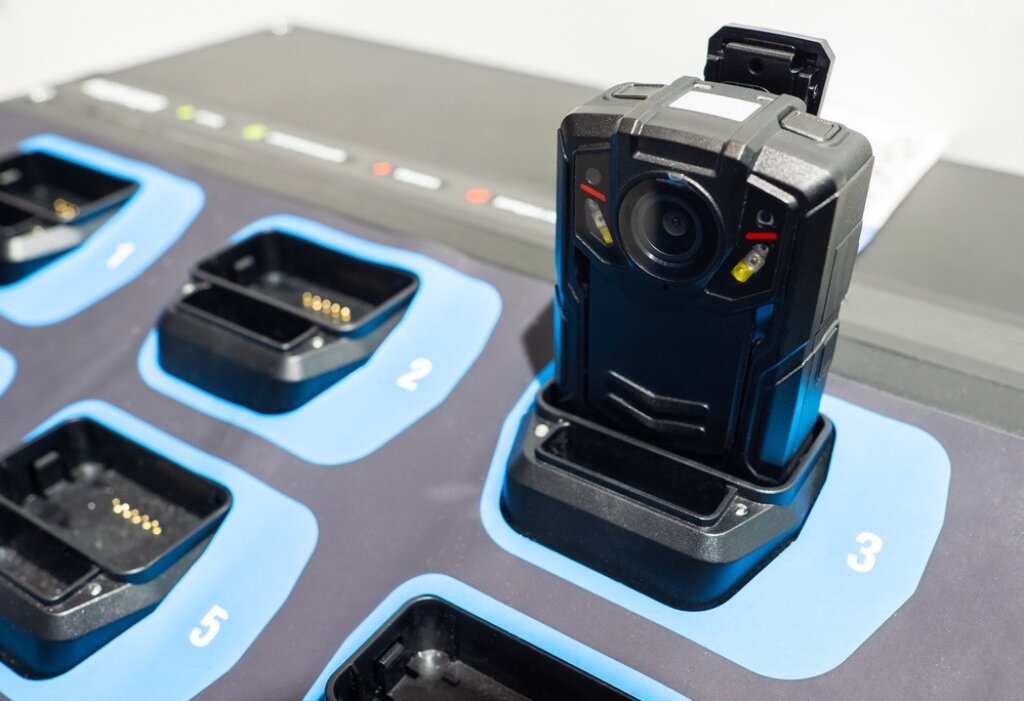Body Cam Redaction: Challenges and Solutions
Body worn cameras (BWC) are becoming commonplace to gather evidence, generate objectivity and trust, and to protect those being recorded and the BWC wearer.
We are accustomed to seeing BWC worn by retail staff, medical staff and law enforcement officers. BWC act as a deterrent as individuals are likely to behave differently when they realise they are being recorded. BWC are also intended to capture objective evidence for review post-incident.
However, body worn cameras present their own problems when it comes to data privacy and GDPR requirements.

Body worn cameras (BWC): pros and cons
The police wear BWC to foster trust and accountability between police officers and the communities they serve. Police body worn cameras also help safeguard law enforcement officers, and are used to disprove false claims against the police.
Unfortunately, BWC are also susceptible to abuse. BBC Investigations Correspondent, Noel Titheradge, recently reported that police officers are switching off their body-worn cameras when force is used, as well as deleting footage and sharing videos on WhatsApp.
The BBC’s investigation uncovered more than 150 reports of camera misuse by forces in England and Wales.
The primary objective for BWC rollout was to improve the quality of evidence collected, and to gather candid footage to protect BWC wearers against malicious or unfounded complaints. The fact that abuse has been reported in the media does not undermine BWC fundamental utility, but it highlights operational challenges.
Download our guide to managing BWC footage
Click on the button below to download Facit's guide to the importance, challenges and best practices associated with managing BWC footage.

FAQs: bodycam video redaction
1. What is BWC video redaction, and why is it important?
BWC video redaction is the removal of personal and sensitive data (faces, licence plates) and, sometimes, audio from bodycam footage. Redaction enhances incident investigations while protecting people's privacy under regulations such as GDPR.
2. Why is transparency important in video redaction?
Being transparent means that the general public and the BWC operator can trust the redacted footage as unbiased evidence.
3. What issues affect bodycam data?
Challenges include managing vast data volumes, complex editing, data security concerns, resource allocation, and balancing privacy with public expectations.
4. How does outsourcing BWC footage affect privacy?
Outsourcing video footage for redaction introduces risks of privacy breaches owing to the number of data exchanges with external agencies.
5. Can people refuse to work with video evidence?
Video evidence is presented in the majority of court cases. Video evidence is admissible court subject to the judge’s approval. Organisations sometimes refuse to work with video evidence and cite as the reasons the complexity and cost of redaction, and potential privacy risks associated with handling sensitive information. However, compliance is required and lack of redaction resources is not a reason to withhold video footage.
Video redaction challenges
Video is an important element for the legal community. However, video processing and use as evidence present difficulties surrounding storage, security, and safeguarding privacy.
What happens when BWC footage is captured by a large organisation or the police force? The main problem is that large-scale BWC operators do not have the resources or time to edit the footage as required by the law.
While video redaction is essential to protecting personal data, it is a challenge to implement in practice. The most significant challenge is ready accessibilityto compliant BWC footage.
Video redaction presents several challenges, particularly the challenge to ensure accuracy and efficiency.
The process of manually blurring or obscuring faces and sensitive information is time-consuming and prone to human error.
Automated redaction tools can help, but they may struggle with varying lighting conditions, camera angles or overlapping objects, which leads to incomplete redaction.
Balancing the need for privacy with maintaining the integrity of the video content is also challenging, as excessive redaction can obscure important details.
Maintaining compliance with legal standards and ensuring that the redacted footage is still usable for its intended purpose adds complexity to the process.
Solutions to video redaction challenges
To speed up the redaction process, and make evidence available in a timely manner in accordance with privacy laws, AI-driven redaction software is available that automatically removes personally identifiable information (PII) from BWC footage.
Redaction software works post-incident or in real-time to redact footage automatically and autonomously.
To address video redaction challenges, employing advanced AI-based redaction tools is crucial.
AI-driven redaction tools can detect and obscure faces, license plates and other sensitive information automatically, and with greater accuracy and speed.
Regular updates and training improve their effectiveness in handling varying conditions, such as lighting and camera angles.
Combining automated tools with manual review ensures precision, which enables operators to make adjustments when the software misses or over-redacts elements.
Clear guidelines and consistent practices help to maintain legal compliance.
Additionally, using metadata tagging and auto-tracking can streamline the redaction process, and make it easier to locate and redact sensitive information without compromising video integrity.
Facit helps to solve BWC redaction challenges
It is incumbent on every organisation to ensure that it acts compliantly when it captures, holds, stores or shares data. It is therefore essential that organisations have policies, processes and training in place to establish best practice for video redaction.
Facit’s Identity Cloak automates redaction tasks rapidly that otherwise require human intervention and many labour-intensive processing hours.
GDPR and privacy regulations around the world make video redaction a “must-have” feature in digital video evidence management systems.
Facit helps organisations globally to redact video footage in full compliance with prevailing regulations.
Let us know how we can help you solve your video redaction challenges.
Related articles
Video redaction: A complete guide



